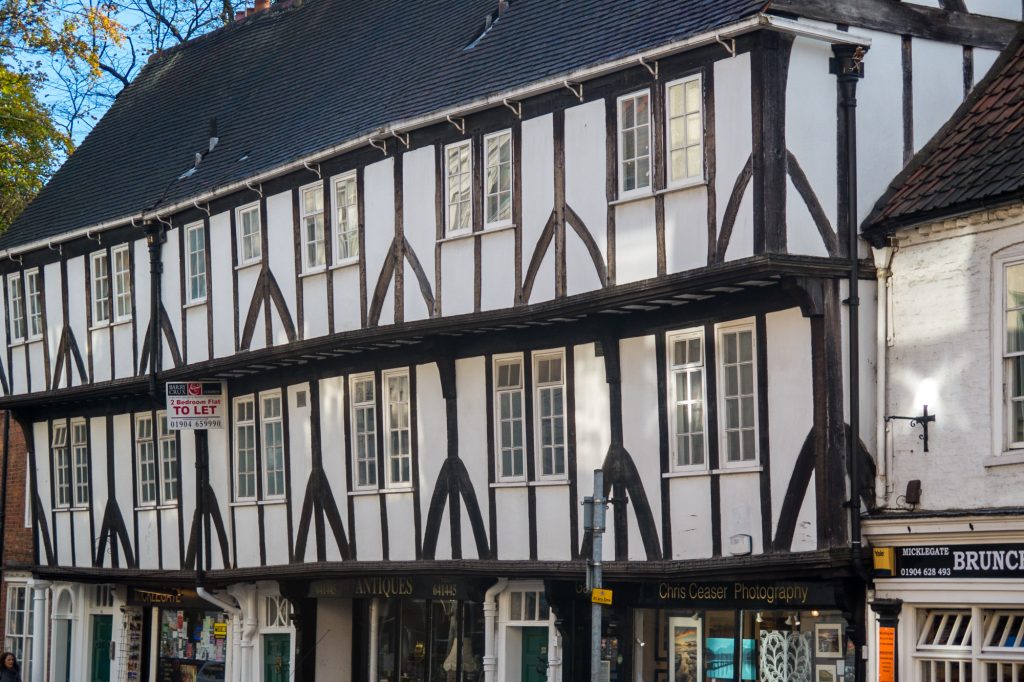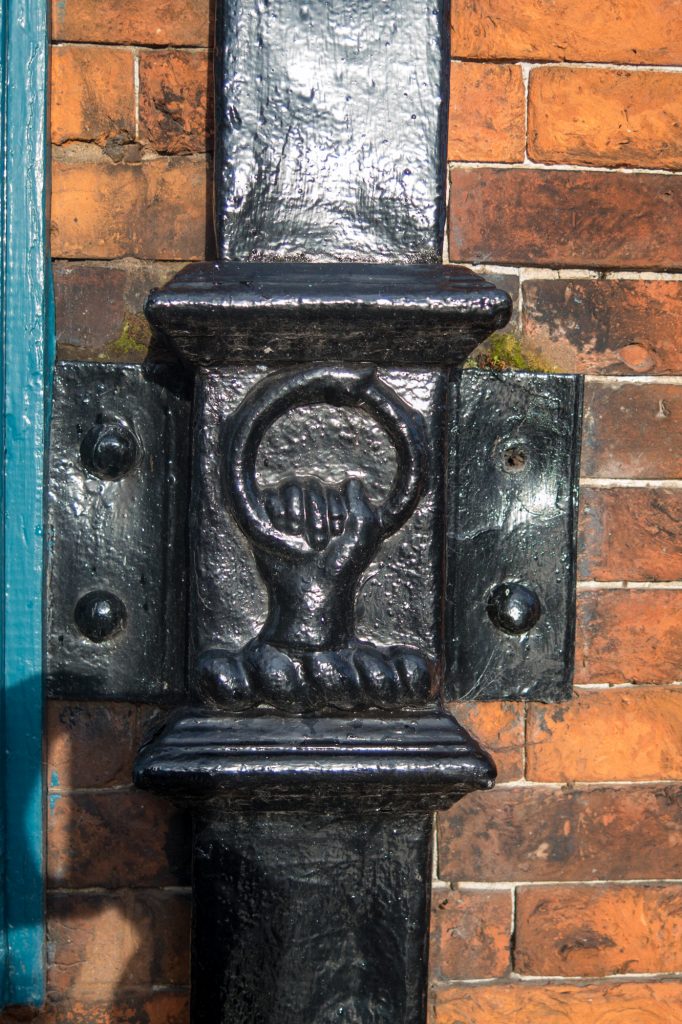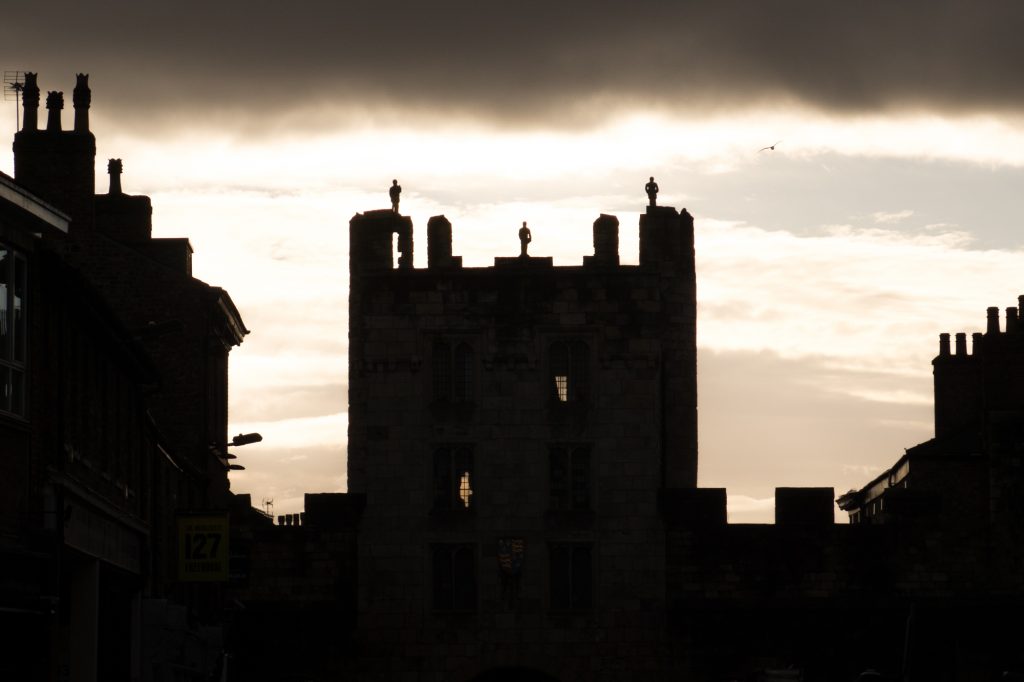Conjuring up the spirit of place

I’m stood within the bounds of Micklegate, York and I’m being watched warily by passers-by. I’m looking into my phone and reading out loud a list of names: Flavius Bellator, Julia Fortunata, Duccius, Alia Aeliana, Gospatrick, Robert de Clairevaux, Benedictus and Moseus, Gilbert de Gaudibus, Elizabeth Fryer, Margaret Sarah Crompton and John Durham.
They are names of people that have frequented Micklegate over the last 1500 years.
Whilst mouthing their names, I feel as though a spell is being cast. I feel as though I’m folding their names back into the fabric of this street.

Today is the culmination of a few years research on the great street of Micklegate. My camera has zip-wired along the eaves lines, the pattern and decoration – plucking out plumb compositions of the Doric doorways and pantile roofs. It has been the instigator, my guide into a telling fabric.
Around nine feet beneath where I stand, on the corner of Micklegate and Barker Lane, is the original Roman road that stretched from the Colonia on the West Bank of the Ouse into the city proper. Just a few feet away, across the road in Trinity Lane, the base of a Roman column was found during road works, and here, on Micklegate proper, a Mithraic shrine was found beneath a cellar. Further afield, oddly shaped ridge tiles have been unearthed. They were hollow with an opening like an open mouth. It is thought that they ‘whistled’ during windy conditions – apotropaic in nature – not unlike my name chanting.
From that time onwards people like Marcus (a river pilot) Nikomedes (a freed slave) and William Lonsdale (a glazier) have mulched their presence into the materials, patterns, symbols and boundaries that make up this street.
This street is rooted – not a single brick, latch or crown-post has escaped the links forged by these people over millennia. Through my lens, their presence is felt within the spirit of place – the way that this street has come together, organically, unbroken over time.

It includes the Roman family that mourned their fostered child, a Saxon that shaped the boundaries that remain, a Norman that built the first stone house, the monks that scribed a Bestiary, the ancestors of a Civil War regicide, a Victorian inventor/architect and an Edwardian school governess.
Through them, these buildings act as totems.
Their stories are the glue that holds this place together.







“Whilst mouthing their names, I feel as though a spell is being cast. I feel as though I’m folding their names back into the fabric of this street.”













